Spanish superstitions to keep in mind for the coming year...
Friday, December 27, 2019
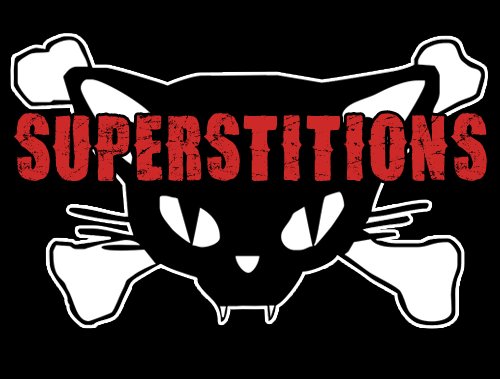 Nothing worse than being superstitious and working in a mirror factory, an umbrella shop ... Now we are just about to enter 2020, everyone wants a fresh start for the coming year. Experts agree that in today's Spain, superstitions are on the rise. So I thought I would detail, along with their origins, some of the most popular superstitions in Spain (even though many are common in other countries) to stand you all in good stead for 2020. Nothing worse than being superstitious and working in a mirror factory, an umbrella shop ... Now we are just about to enter 2020, everyone wants a fresh start for the coming year. Experts agree that in today's Spain, superstitions are on the rise. So I thought I would detail, along with their origins, some of the most popular superstitions in Spain (even though many are common in other countries) to stand you all in good stead for 2020.
Tuesday and the Number 13
BAD LUCK: The Curse of the number thirteen is rooted in the Last Supper of Jesus Christ with the twelve Apostles when he was betrayed. It is believed that if thirteen people sit down to eat at the same table, one of them will die within a year.
The day of the week varies: in Spain, Mexico and Greece it is Tuesday and thirteen, In the UK and other countries, it is Friday the thirteenth because Jesus was crucified on a Friday.
Starting the day on your left foot
BAD LUCK: Petronius in the 'Satyricon' alluded that “misfortune” entered a room or a place with its left foot. In Spain, it may have originated from a Celtic tradition and the solar motion, which always moved towards the right. To counter-act it one must do the sign of the cross three times.
Throwing rice at a wedding
GOOD LUCK: Before, everyone threw pieces of sweets at the bride and groom, symbolizing happiness and fertility. But in lean times they threw wheat or rice, as it was much cheaper, to this day in Spain, they throw rice.
Feeling a buzz in your ear
GOOD LUCK: When you hear or feel a buzz in your ear ask someone to give you a number. The letter of the alphabet that corresponds to that number will be the first letter of the name of the person you expect to marry. "The Left ear is for love and right for spite." If you pinch the right ear immediately when you hear the whistle, the person who is criticizing you will bite their tongue!
Somebody casts an “evil eye” (spell - mal de ojo)
BAD LUCK: It is traditionally believed that if we are completely reflected in the pupil of an eye, we could be trapped by it. Therefore, from ancient Rome to the Middle Ages, those who had cataracts or other visual defects were often sacrificed at the stake. In Greece, Turkey and Egypt are widely believed that there are people with evil powers in their eyes, even unconsciously, one with these powers could cause harm just by casting their eyes over something. For protection, one needs to carry garlic, gold and silver, blue glass eyes and horseshoes.
Spilling salt
BAD LUCK: Its origin dates back to 3500 B.C. Then, they believed that salt was incorruptible, which is why it became a symbol of friendship. Hence the belief that if you spill it, the friendship would break. To counteract this effect, one would take a pinch of the spilt salt and throw it over one’s left shoulder.
Saying "Jesus" or "bless you" when someone sneezes
GOOD LUCK: It was because sneezing was the beginning of many different diseases and so one asked God to drive away the danger of infection. It is also said that it was to keep the devil from entering through the mouth.
Spilling wine
BAD LUCK: When you spill wine on the table, you should immediately put a little of it on your forehead for good luck and if it was champagne then you have to touch it with the tip of your fingers and put it on the earlobe to achieve eternal happiness. The origin of this belief is thought to be related to the fetus as it begins life with the earlobe. For this reason, when you soak it in champagne you’re wishing that your life will be surrounded by all kinds of happiness and joy.
Bringing a used broom to a new house
BAD LUCK: You mustn’t take a used broom with you when you move house, as doing so, will bring bad luck and all the misfortune from the previous home.
Breaking a mirror
BAD LUCK:It is said to curse you with seven years bad luck. The mirror was a magical element of divination, so if it broke, it was so that it couldn’t show the frightening future ahead. Seven years is due to the belief that the body renews itself every seven years.
Placing bread upside down on the table or dropping it on the ground
BAD LUCK: Bread is a staple food. Therefore there have been several superstitions that have arisen related to making it, cutting it, eating it and offering it to others. Placing it upside down is supposed to bring bad luck because it's treated as an insult to the body of Christ, also, when it falls to the ground it is custom to kiss it and do the sign of the cross three times to ward off misfortune.
Parsley
GOOD LUCK: In Ancient Greece parsley was considered a sacred plant that symbolised triumph and resurrection. Driven by this belief, the Greeks adorned graves with wreaths of parsley.
Putting a hat on the bed
BAD LUCK: Putting a hat on the bed is an omen, in Spain and Italy, that means something bad will happen. This superstition has another meaning: that your mind will go blank. This belief probably comes from the symbolism of the hat, which represents the head and thoughts and is a symbol of identity.
An off-centred picture hanging on the wall or falling from the wall where it was hung.
BAD LUCK: This idea has its origins in ancient Greece, where it was believed that if the portrait of a monarch or a celebrity fell to the ground suffering serious damage it meant that they would soon die.
Putting a cactus on the windowsill
GOOD LUCK: A popular belief says that this plant wards away the evil of the house. It’s great ability to absorb moisture from the atmosphere makes it a powerful protector against evil spirits, that need moisture to grow. The custom of placing a cactus by doors and windows, observed in all the Mediterranean comes from the belief that if spirits find water along the way, they could drown crossing it and be trapped there forever.
Sweeping the feet of a single woman or a widow
BAD LUCK: This meant that they would never marry. Related to witches.
A falling eyelash
GOOD LUCK: The Devil collects eyelashes and, according to tradition, losing one meant running all kinds of dangers. So if one falls, put it on the back of your hand and throw it over your shoulder or place it on the tip of your nose, blow it upwards and make a wish.
Throwing coins into a well or fountain
GOOD LUCK: It comes from ancient divination, the ritual of throwing stones or hairpins down a well, in order to know whether a fact would be fulfilled or not. If bubbles rose to the water surface it meant that they would be fulfilled.
A black cat walking towards you or which crosses your path
BAD LUCK: Although in Egypt it was believed that the cats were the reincarnation of the gods, centuries later, the Catholic Church regarded them as the reincarnation of the devil, so they were burned. Black was identified with the devil being the colour of night. In most of Europe and North America it is believed that a black cat brings bad luck if it moves away from you, but good luck if it walks towards you. In Spain it pretty much in any direction, but its always bad luck!
 0
Like
Published at 6:31 PM Comments (0)
0
Like
Published at 6:31 PM Comments (0)
It's Christmas Lottery time again!
Wednesday, December 11, 2019
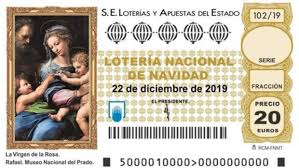
Spain's Christmas lottery has been running for over 200 years. I have no idea how long other lotteries have been working but in Spain the Christmas lottery is a tradition, an institution, and plays a major role in boosting the Christmas Spirit.
I must admit when I first came to Spain I found it quite confusing; “series”, “billetes”, “decimos”, “participaciones” etc. and then the prizes which seem endless, when the results are published the following day in the paper it takes up pages and pages. To give you an idea of how important this is for the Spanish and their festive spirit, this year there is an expected average spend per inhabitant of in the Valencian community of €75, slightly more than last year. This year there is an expected turnover of more than 3,6 Billion Euros of which 70% will go to back out in prize money. Not quite sure what happens to the other 30%, which is a fair whack!
Originally in 1812, it was an idea created by a Minister called Diriaco Gonzalez to increase the government income without penalising the people via additional tax. As it goes there are over 15,000 prizes given out. .
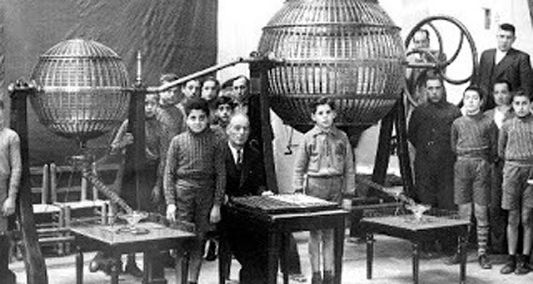
 In total 180 million “decimos” (tenths) are put on sale in the month of July at €20 a ticket. A decimo is a tenth of a “billete”- Note. So obviously if you want all of the decimos of a particular number you need to buy the entire “Billete” at €200. In total 180 million “decimos” (tenths) are put on sale in the month of July at €20 a ticket. A decimo is a tenth of a “billete”- Note. So obviously if you want all of the decimos of a particular number you need to buy the entire “Billete” at €200.
Each number assigned to a “Billete” is printed up 180 times into what they call “Series” – serial numbers, basically, so each run of decimos has a different serial number. So if you chose for example 12,345 as your preferred number (always five digits) to buy all of the tickets that carry this number in the country you would have to buy 180 “Billetes” (all the serial numbers) meaning you would have to cash out €36,000.
Finally you have "participaciones" which are shares of "decimos" normally divided in to 10 parts aswell, so 1/10th of a "decimo"- 2 euros. This is normally done by groups of people who can't afford to buy so many tickets at €20 and prefer to buy more "shares" in other numbers and hedge their bets for a budget. This is very common in bars and schools, small companies and groups of friends etc. It is also very common for companies to give lottery to their employees as a Christmas gift.
As far as the prize money goes, the main prize is the 1st Prize which they call “El Gordo de Navidad” and pays out €4,000,000 per Serial number, which is €400,000 per Decimo. The 2nd prize pays out €1,250,000 per serial number, the third prize €500,000 per serial number and then there are other prizes of €200,000 - €60,000 - €20,000 euros and so on.
This lottery, as opposed to other lotteries, does not make any one person stinking rich, mainly because of the price of the tickets. It is designed to share the wealth amongst the people. As the Serial numbers and the Billetes tend to be bought up together without being divided, it is very common for entire villages or neighbourhoods to end up having bought the same number or very similar numbers that also gain prize money, meaning when it hits in a small village the chances are most of the village wins.
On occasions, several “serial numbers” can hit in the same place. When you think that there is a prize of €4,000,000 for each of the 180 “Series” it’s quite a substantial sum that is being distributed just with the 1st prize - €720m. This is why it is so popular because there is a slightly better chance of winning something even though the probability of winning the 1st prize is only 1 in 100,000. Still much better odds than the EuroMillions.
However, there is a 1 in 10 chance of getting your money back and coming out evens and a 15,3% chance of actually winning something. If the last number of your ticket coincides with the last number of the 1st prize in your series you get your €20 back. So the thinking is I’ve got a “good chance of winning something” even though it might not be entirely true. Most people wouldn’t invest in anything if it had a 10% chance of breaking even! But this is Christmas and it’s all part of the festive tradition, not even the Spanish Civil war was capable of stopping the lottery. During that period each side stopped and did their Christmas lottery, so it doubled up!
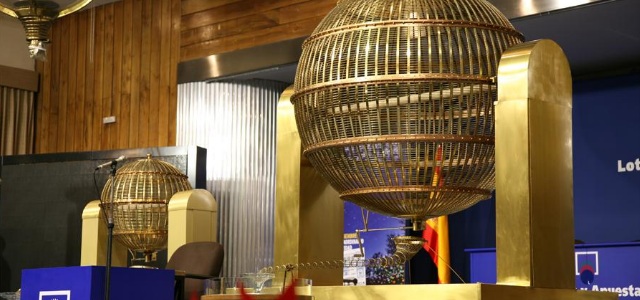
.jpeg) .jpeg)
The prize draw is a major event on TV, many kids take the day off school to stay home and watch the draw, even though they shouldn’t! It lasts for at least 3 hours until all the prizes have been given out. The system used is a traditional one that hasn’t changed much since 1812. It entails two wire spheres that rotate until one wooden ball falls down the shoot. One sphere is for the ticket number and the other is for the prize that corresponds.
Every year children from the San Idelfonso School sing out the numbers and the prizes in a very characteristic way, adding to the occasion. So if you are feeling lucky go out and buy a “decimo” who knows?!!
 1
Like
Published at 6:54 PM Comments (1)
1
Like
Published at 6:54 PM Comments (1)
This Village is an Architectural Treasure...
Friday, December 6, 2019
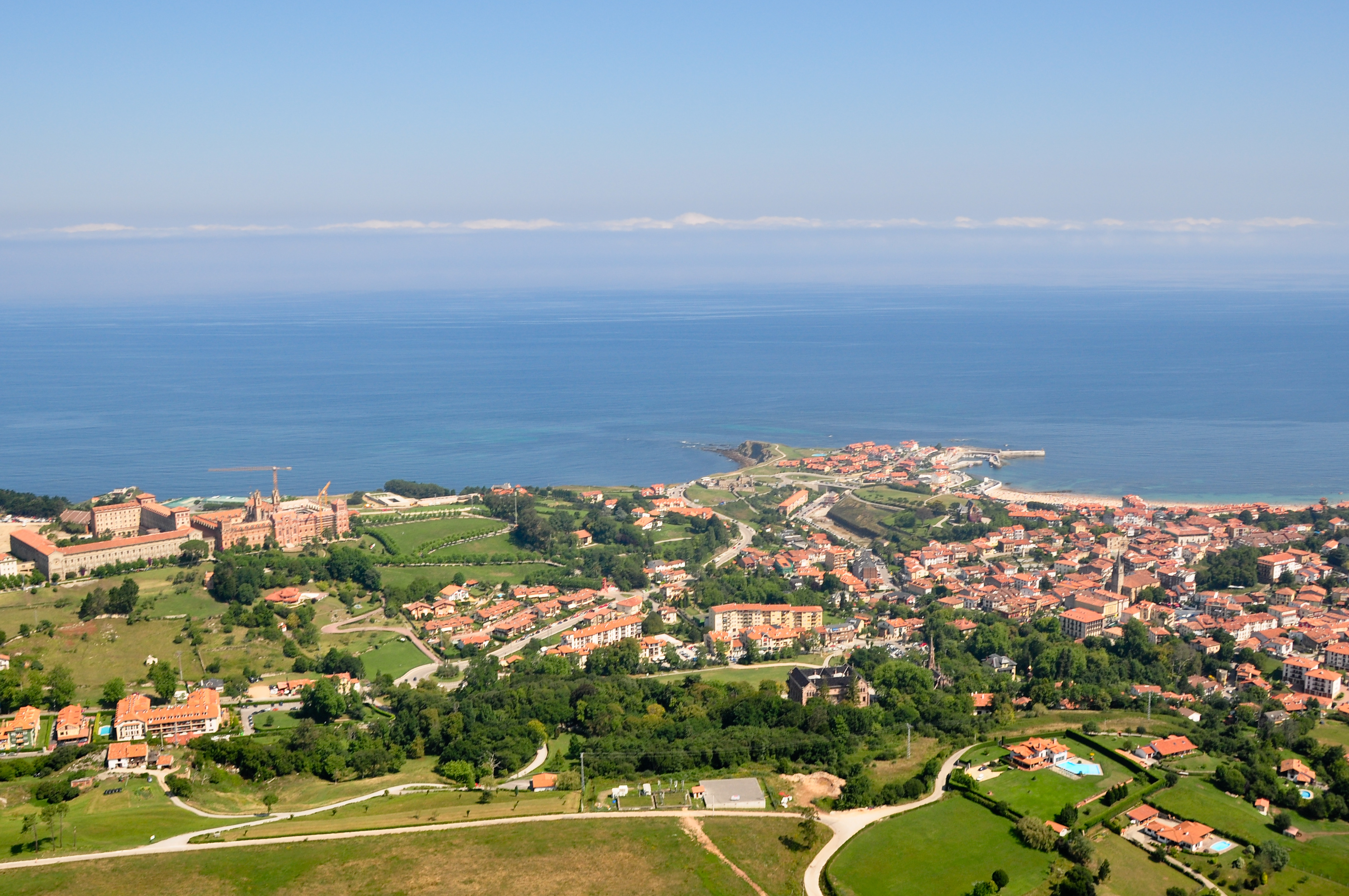
Located on the Bay of Biscay, among steep cliffs, Comillas is half fishing village, half architectural treasure. With a noble, stately air, it is one Cantabria’s most celebrated towns and one that attracts most visitors. Besides the unrivalled natural backdrop, the town boasts some of the masterpieces of Spanish modernism. And if that isn’t enough, the village has a charming fishermen’s quarter where you can savour the best freshly caught fish and of course the famous cocido montañés, a bean stew with cabbage, potatoes, and pork products. This tierruca, as Cantabrians lovingly call their land, charms us at every step.
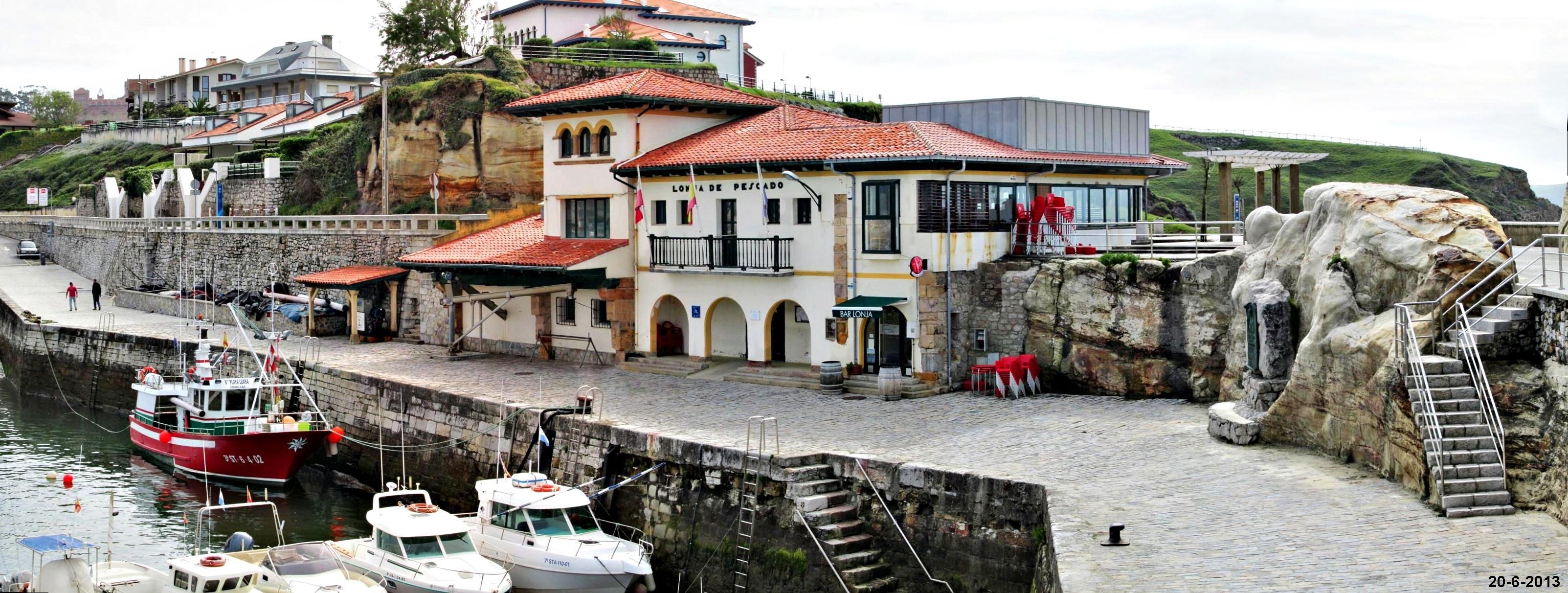
Although significant, emblematic buildings from the 18th century are still preserved, such as the Plaza Vieja and the Iglesia Parroquial, monumental Comillas was born thanks to the efforts of Antonio López, the first Marquis of Comillas, who arrived here after coming back from America and founding major shipping and tobacco companies in Barcelona. It was he who was behind the major projects in the town. His personal effort to modernise Comillas succeeded in getting King Alfonso XII himself to spend his summers here, and the town can boast of being the cradle of inspiration for the best modernist masters, key players in its personal and beautiful aesthetic character. Most of these emblematic buildings were built in the late 19th and early 20th century, the era which witnessed the town’s greatest economic and social splendour. Without a doubt the best way to get to know the place is simply by walking around it and discovering the surprises that await at every charming turn.
Catholic University Comillas
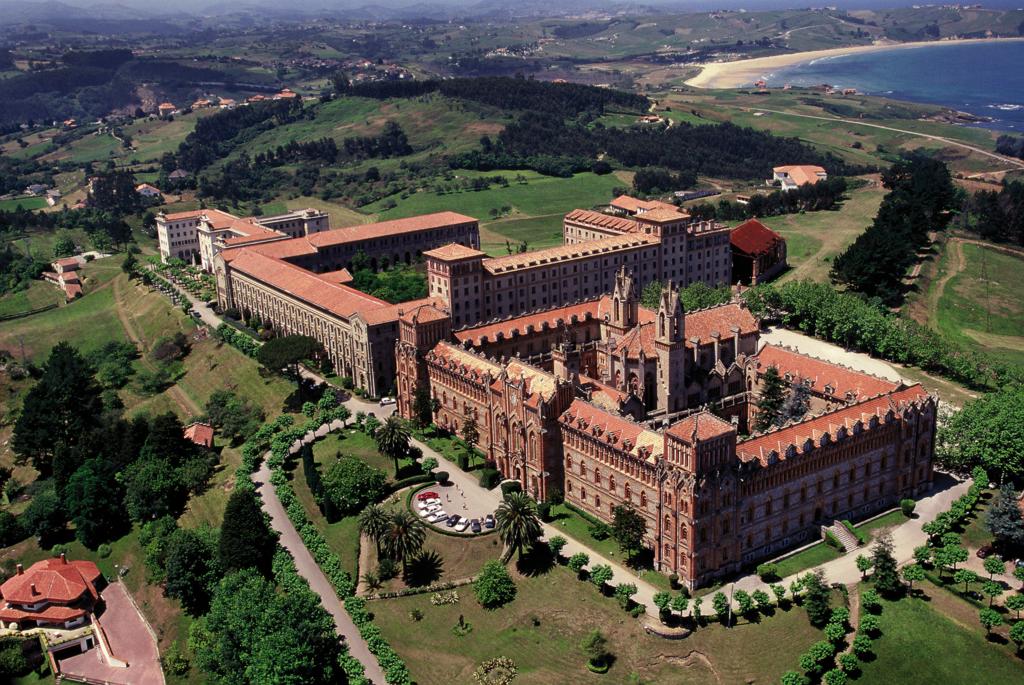
Palace Sobrellano
 12.03.51.png)
Gaudi's Summer House
 12.02.50.png)
One of the most impressive and representative buildings in Comillas was built towards the end of the 19th century. Designed by Antonio Gaudí, it is a summer residence that resembles a doll's house, with its fantastical towers and characteristic tile work with textured sunflowers. This latest stroke of aesthetic genius took its inspiration from the groundbreaking sustainable heating system developed by Gaudí for the palace.
 0
Like
Published at 2:48 PM Comments (0)
0
Like
Published at 2:48 PM Comments (0)
Spam post or Abuse? Please let us know
|
|